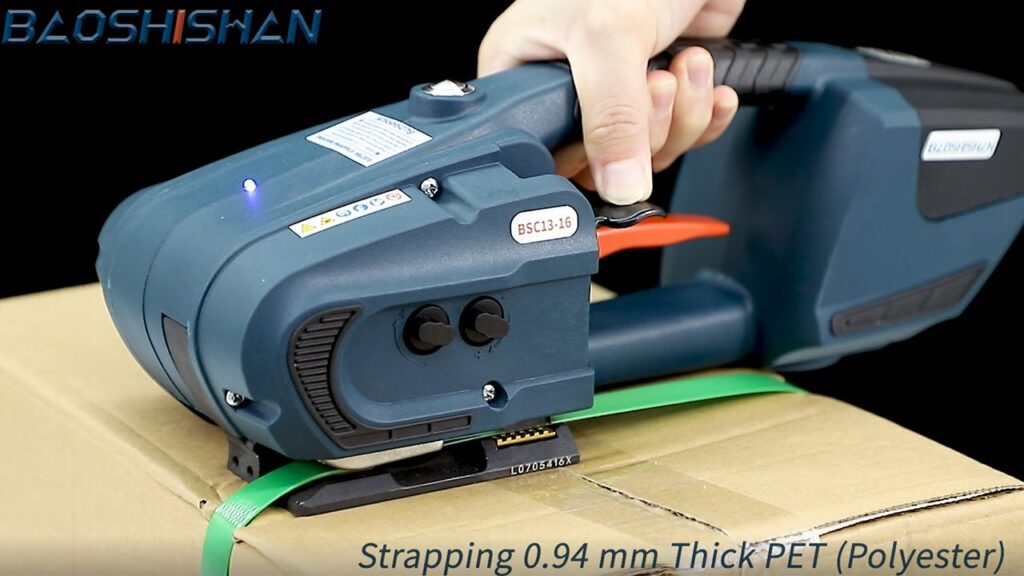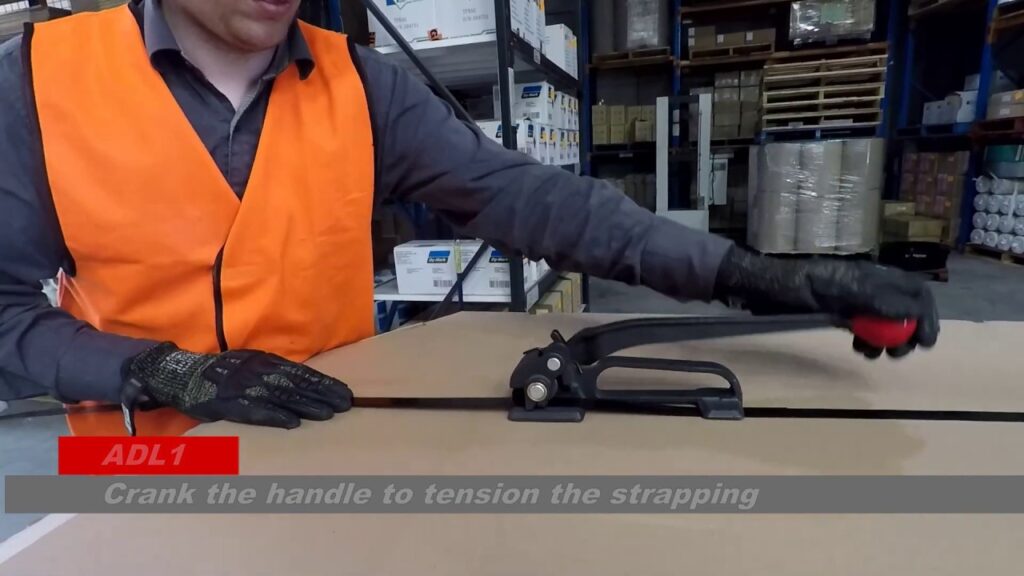## **Rack Pusher Tensioner for Steel Strapping: A Reliable Solution for Secure Packaging**
Steel strapping is a widely used packaging material in various industries due to its durability and strength. However, the process of strapping can be quite challenging, especially when it comes to securing different sizes of steel strapping. That’s where the Rack Pusher Tensioner with nose function comes in. This innovative tool offers convenience and efficiency in strapping operations, ensuring optimal packaging results. In this article, we will delve into the features and benefits of the Rack Pusher Tensioner and how it enhances the steel strapping process.
The Rack Pusher Tensioner is specifically designed for use with 3/8″ to 1-1/4″ x 0.015″ to 0.031″ steel strapping. Its versatility makes it suitable for a wide range of applications, from small parcels to robust packages. One notable feature of this tensioner is its compatibility with both closed seals and wing seals, offering flexibility and adaptability to different sealing preferences.
### **Key Features of the Rack Pusher Tensioner**
**1. Nose Function**
One of the standout features of the Rack Pusher Tensioner is its unique nose function. This function allows for precise control and adjustment of the strapping tension. With a simple push or pull motion of the nose, operators can achieve the desired tension level effortlessly. This feature is particularly beneficial in ensuring consistent tension across multiple packages, enhancing the overall appearance and security of the packages.
**2. Durability and Reliability**
The Rack Pusher Tensioner is built to withstand rigorous strapping operations in demanding industrial environments. Constructed from high-quality materials, this tensioner ensures extended durability and longevity. Its robust design guarantees reliable performance, reducing the risk of mechanical failures that could disrupt packaging operations.
**3. Ease of Use**
Designed with the user in mind, the Rack Pusher Tensioner offers ease of use and ergonomic handling. The tool is lightweight, allowing for comfortable operation even during prolonged strapping tasks. Its user-friendly design minimizes the learning curve and ensures efficient workflow, enhancing productivity in packaging operations.
**4. Flexibility in Strapping Sizes**
Another remarkable feature of the Rack Pusher Tensioner is its versatility in handling various sizes of steel strapping. Whether you’re working with 3/8″ or 1-1/4″ strapping, this tensioner effortlessly adjusts to accommodate different thicknesses, ensuring a secure and tight seal every time. This adaptability is paramount in industries with diverse packaging requirements.
### **Utilizing the Rack Pusher Tensioner: The Strapping Process Simplified**
Now, let’s dive into the steps involved in utilizing the Rack Pusher Tensioner for steel strapping.
**Step 1: Preparation**
Before diving into the strapping process, it’s crucial to ensure the strapping machine is set up correctly. Take the time to familiarize yourself with the machine’s manual to ensure proper understanding of its functions and adjustments. Additionally, inspect the Rack Pusher Tensioner and steel strapping for any damage or defects that could compromise the packaging process.
**Step 2: Loading the Strapping**
Once the machine is prepared, load the steel strapping onto the appropriate dispenser. Ensure that the strapping feeds smoothly through the machine, without any entanglements or snags. This step sets the foundation for smooth strapping without disruptions.
**Step 3: Positioning the Package**
Position the package or parcel that needs to be secured with the steel strapping. Ensure that it is centered and stable on the strapping table, minimizing any potential shifting during the strapping process.
**Step 4: Wrapping and Tensioning**
Begin the strapping process by wrapping the steel strapping around the package, making sure it is snug but not overly tight. Then, insert the strapping into the Rack Pusher Tensioner, ensuring the strapping is correctly seated within the tensioner’s mechanisms. Utilize the nose function to adjust the tension to the desired level, effectively securing the package.
**Step 5: Sealing and Cutting**
Following the tensioning step, it’s time to seal and cut the steel strapping. Depending on your preference, you can use closed seals or wing seals. Apply the seal according to the manufacturer’s instructions, ensuring a secure and proper closure. Once sealed, cut the excess strapping, maintaining a clean and tidy finish.
**Step 6: Quality Inspection**
As with any packaging process, a thorough quality inspection is crucial. Inspect the strapping for any signs of defects, such as weak seals or loose tension. This step ensures that the packages are adequately secured and minimizes the risk of damage during transit.
### **Enhancing Efficiency and Security in Packaging Operations**
The introduction of the Rack Pusher Tensioner into steel strapping processes has undoubtedly revolutionized packaging operations. Its unique features and exceptional performance make it an indispensable tool in industries relying on steel strapping for secure packaging.
By integrating the Rack Pusher Tensioner, businesses can experience heightened efficiency, reduced downtime, and increased productivity. The precise tension control achieved through the nose function ensures consistent strapping across multiple packages, elevating the overall appearance and security of the packaged goods.
In conclusion, the Rack Pusher Tensioner is a reliable and versatile tool for steel strapping in various industries. Its nose function, durability, ease of use, and flexibility in strapping sizes make it an ideal choice for ensuring secure and efficient packaging operations. By incorporating this innovative tool into their processes, businesses can achieve optimal results and enhance customer satisfaction.
Strapping Machines
“Efficient Steel Strapping Tools for Industrial Packaging – Guide to S227 Strapping Tensioner and Manual Strapping Machine”


